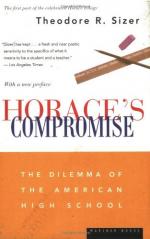|
This section contains 14,818 words (approx. 50 pages at 300 words per page) |

|
SOURCE: Bowditch, Phebe Lowell. “Gladiatorial Imagery: The Rhetoric of Expenditure.” In Horace and the Gift Economy of Patronage, pp. 1-29. Berkeley: University of California Press, 2001.
In the following essay, Bowditch draws on principles of cultural anthropology to propose that Horace functioned in a “gift economy,” and that to some extent his poetry allowed him to resist the patronage that supported him
“The gladiator: crude, loathsome, doomed, lost (importunus, obscaenus, damnatus, perditus) was, throughout the Roman tradition, a man utterly debased by fortune, a slave, a man altogether without worth and dignity (dignitas), almost without humanity” (Barton 1993, 12). No wonder that so many scholars of Horace, confronted with his image as a retired gladiator at the beginning of Epistles 1.1, either make little comment or smile wryly at the irony of the speaker's rhetoric and dismiss the trope as humorously extreme in its depiction of patronal relations as well as public...
|
This section contains 14,818 words (approx. 50 pages at 300 words per page) |

|


